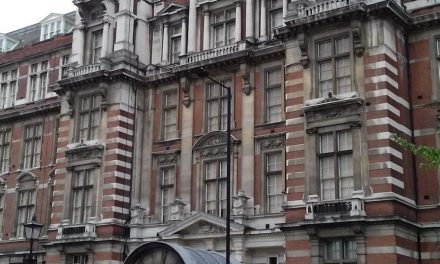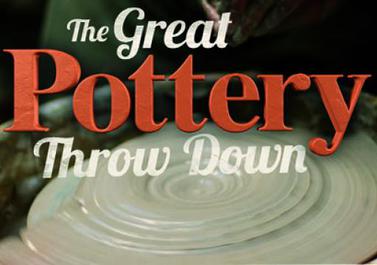Television is a media of texture. Glass, plasma, wood, chrome, shiny aluminium and bright neon, encase and embody the circuitry, while across its programming and commercials a range of textures are given weight, depth, and quality. Television is a touching experience: it is made of inviting, sensory-loaded surfaces and sits amongst other textural furniture in the living room; and its programmes have the cross-modal ability to capture the feeling of a surface, substance, or environment, rendering it tactile in the process, while simultaneously producing tactility in the body of the viewer as they watch.
In the same way that Vivian Sobchack (2000) describes her first textured experience of watching The Piano as a sensory one, we can say that we feel television texture before, or at least as much as, we follow storyline, or characterisation, which can in themselves be argued to be made primarily in the sound and image of texture. From grainy foreground to dense green background; from broken red brick to fluttering velvet curtain; from shimmering glass building to symmetrical slabs of suburb; and from concrete arterial roadway to high rising neon metropolis, the television screen is rendered part sensible through its textural qualities.

Sometimes textures are directly referred to and commented upon. For example, in personal style shows, and fashion programmes, such as Gok Live: Stripping for Summer (Channel 4, 2013), human bodies are texturized, described as rough, smooth, hard, soft, dry, wet, or sweaty. Clothes are similarly described in terms of their textural properties – silky, prickly, coarse, or bumpy. In both cases, aesthetic choices will be made to bring these textures alive for the viewing audience, such as moody or sensitive lighting, combined with a close up shot that tracks across the skin or item of clothing. In these instances, the viewer is asked to touch the textures as if they are sitting in the palm of their hands; as if it is their fingers running over them; or as if it is their skin being texturized and their bodies that are directly feeling that new silky bikini under a warm, round sun.
Textures are never neutral, of course; they carry with them an ideological weight that is meant to be corporeally or phenomenological felt. Power saturated gender, class, and race binaries are readily reproduced through television textures. For example, beautiful female bodies are seen not to have blotches, rashes, pimples, wrinkles, or stretch marks. Idealised feminine whiteness is found in the perfected silky smooth hair of many shampoo adverts, or in the flawless, alabaster skin of many cosmetic commercials. The blue-collar breadwinner or lug of programmes such as Shameless (Channel 4, 2004-) is coarse, rough, and rugged. Crude, sensory-based racial stereotypes are produced out of textures defined as slimy, oily, and greasy.
In the first television advert for the SK-II Pitera Essence Range (Japan/Australia 2011), Blanchett introduces the viewer to ‘the miracle’ of the product. Filmed in a verdant green bamboo forest, Blanchett is the personification and embodiment of idealised whiteness, her blonde silky hair, natural smooth skin, and long, flowing white silk dress the very textures that creates this sense of racial purity and perfection. Blanchett’s face is intermittently captured in close up, with soft, suffuse lighting creating the impression of a natural halo around her shoulders. Her hair flutters in the wind as she glides through the forest, translucent-like, barely touching the ground she walks on. Blanchett appears at one with the textures of nature; naturally, essentially white.
Blanchett is nature and yet she is also culture/cultured, the embodiment of civilised life, a connection made in the way the scene cuts to an image of the product in a white laboratory where its ingredients appear as milk, and then composed from clear, clean water. The qualities and values of the product, and the qualities and values of Blanchett are being shared and approximated through textural convergence – she is milk also, she is the embodiment of clean lines, of cleanliness.
Idealised female whiteness is being imagined to be youthful – wrinkle free and auratic in its shine. This youthfulness is the elixir of the perfected self; it is what every woman should aspire to be like. We learn that the secret ingredients for the product came through the recognition that the hands that were used in the preparation for sake appeared youthful, although the image of the Japanese hands that is supplied looks both wrinkle free and whiter than the rest of the body. Race is being effaced or made safe at the exact same time it is being foregrounded and orientalised. We are introduced to the idea of tactility and cross-modality; these Japanese hands become the face made over, in an oriental slave to white master or mistress-like relationship. The association works subtextually, of course, but the link to Blanchett who has her face attended to by make up artists and the like, for all manner of photo shoots and film work, connects the mythic signifiers of touch-textures together.

In television, genres may well have their own set of textural properties created out of the type of materials, substances and environments used and the way they are sensorialised. For example, the hi-tech studio of the big money quiz show creates the textured spectacle of neo-liberal individualism and egotistic consumption. Lights, buzzes, reflective glass, high neon, and sharp suited hosts are the material out of which an intricate fabric of shared excess emerges. In the supernatural thriller, ornate woods, big windows, heavy drapes, and thick, woven carpets provide a series of foreboding, pregnant textures that ready the body for the body horror that will follow. Science fiction may be best understood in terms of textures of clean and smooth lines, metallic elements, and electronic and alien soundings.
In Under the Dome (CBS, 2013), it is the texture of the invisible, semi-permeable barrier that gives it comprehensibility. When it is touched it bends, reveals itself as translucent skin, conductive and conducive. When characters first touch this skin an electric hum is generated, so that its physical state is revealed through being touched, as it ‘touches’ back, and as a sounding out of its electric(fying) living texture. The outside of the blue Tardis in Dr Who (BBC, 2005- ) is made of ‘concrete’ and a wooden door we can often see the fine lines of; enabling us to understand its everydayness or normalness through these ordinary, earthly materials and their textures. By contrast, inside the Tardis’s Console room, a giddy mixture of materials, matter, and elemental states are given life through the way they are texturized – rendered metallic, thick, course, wobbly, and liquid. The outside/inside paradox of the Tardis, the fact that it is a time and space machine, in part arises out of its contradictory textures.
In making a very brief case for understanding television through its textures, one is also continuing a call for close textual analysis, and for recognising the way the senses are activated and reactivated not simply through linguistic or discursive means.
In memory of Peter Redmond (26th February 1932- 7th July 2013)
Sean Redmond is an Associate Professor of Media and Communication at Deakin University, Melbourne, Australia. He writes on stardom and celebrity, science fiction, screen aesthetics, and authorship. His latest book on The cinema of Takeshi Kitano comes out later this year with Columbia University Press.
Sean Redmond, Deakin University, Melbourne: s.redmond@deakin.edu.au





